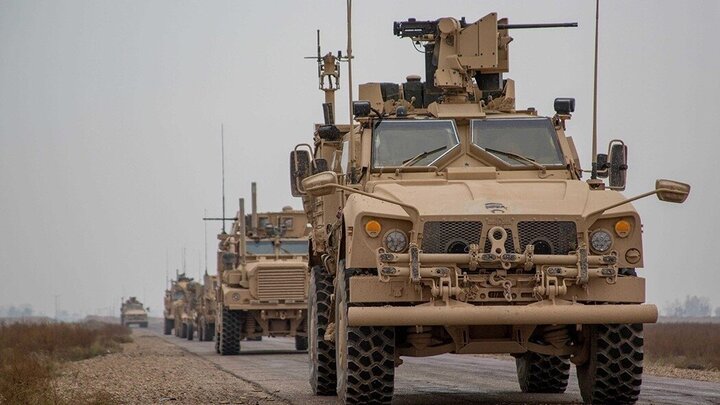Behind the Surge in U.S. Military Activity in Syria

The english section of webangah News Agency citing Mehr News Agency and Al Mayadeen, highlights the stark contradiction between official statements on reducing the American military presence in northeastern Syria and the reality of meaningful military reinforcement at U.S. bases in the country.
Earlier this year,the U.S. Department of Defense announced plans to close several bases east of the Euphrates River due to a diminished ISIS threat in Syria, alongside a decision to reduce troop numbers by the end of 2025.
Following that proclamation, American forces began dismantling outposts and transferring military gear and logistical supplies from northeastern Syria to Iraq through land border crossings.
However, this drawdown effort abruptly halted about four months ago. Field sources report that Washington decided to delay its withdrawal because of evolving political and military developments within Syria-and fragile security conditions in the northeast amid ISIS’s resurgence and multiple attacks by this terrorist group across several eastern regions.
Among key factors behind America’s shift is Assad regime ally Hay’at Tahrir al-Sham’s inability to fully control Syrian territory coupled with escalating internal tensions, especially incidents along coastal areas and sweida province.
The sources further note ongoing confrontations between groups loyal to Hay’at Tahrir al-Sham and Syrian Democratic Forces (SDF) along contact lines east of the euphrates as another concern fueling fears over ISIS’s potential return. They add an indirect reason for postponing withdrawal relates to Donald Trump’s administration aiming to implement its March 10 agreement mandating integration of SDF units into a new Syrian government structure with coordinated anti-ISIS efforts.
According to Al Mayadeen reports since mid-September, American bases east of the euphrates have become increasingly active-not for exiting but for receiving diverse military assets including heavy weaponry, air defense systems, advanced electronic equipment as well as additional personnel at facilities in Deir ez-Zor, Hasakah, and Raqqa provinces.
In recent weeks, U.S. forces conducted intense live-fire exercises involving aircraft and helicopters aimed at boosting operational readiness across these locations.
Field data indicates approximately 100 trucks carrying logistical supplies crossed from Iraq’s Kurdistan region into northeastern Syrian bases via al-Walid crossing while more than ten cargo planes delivered further materiel distributed mainly at Hasakah-based outposts.
Since early October, Al-Shaddadi base near Hasakah has hosted rigorous drills simulating defense against aerial attacks with warplanes and drones complemented by activated radar systems inside installations plus increased perimeter security measures including intensified patrols on routes leading there.
The SDF also expanded patrols extensively through surrounding villages during these exercises. Within this broader militarization trend in northeast Syria-a field source confirmed an american security delegation recently inspected Tal Beidar base near Hasakah assessing defensive positions alongside radar arrays plus air defense setups as well as communication devices including surveillance cameras.
this delegation additionally visited Kharab Jiyar base near Al-Yarubiyah city close to Syria-Iraq border where they evaluated combat readiness coinciding with delivery via cargo plane carrying advanced air defense systems there.
The officials requested installation/activation of a new radar system supplemented by upgraded communication infrastructure plus additional surveillance cameras anticipating future tactical shifts in regional dynamics.
Field sources reveal that recent U.S. deployments may relate directly or indirectly to potential escalations feared by Washington-such as clashes between SDF forces versus groups affiliated with Hay’at Tahrir al-Sham or Turkish offensive operations targeting Kurdish positions deeper inside Syria.
They also point out ongoing concerns regarding probable ISIS attacks targeting American positions within Syrian territory moving forward.
Still observers argue genuine motives behind America’s increasing activity remain undisclosed pending forthcoming developments.


